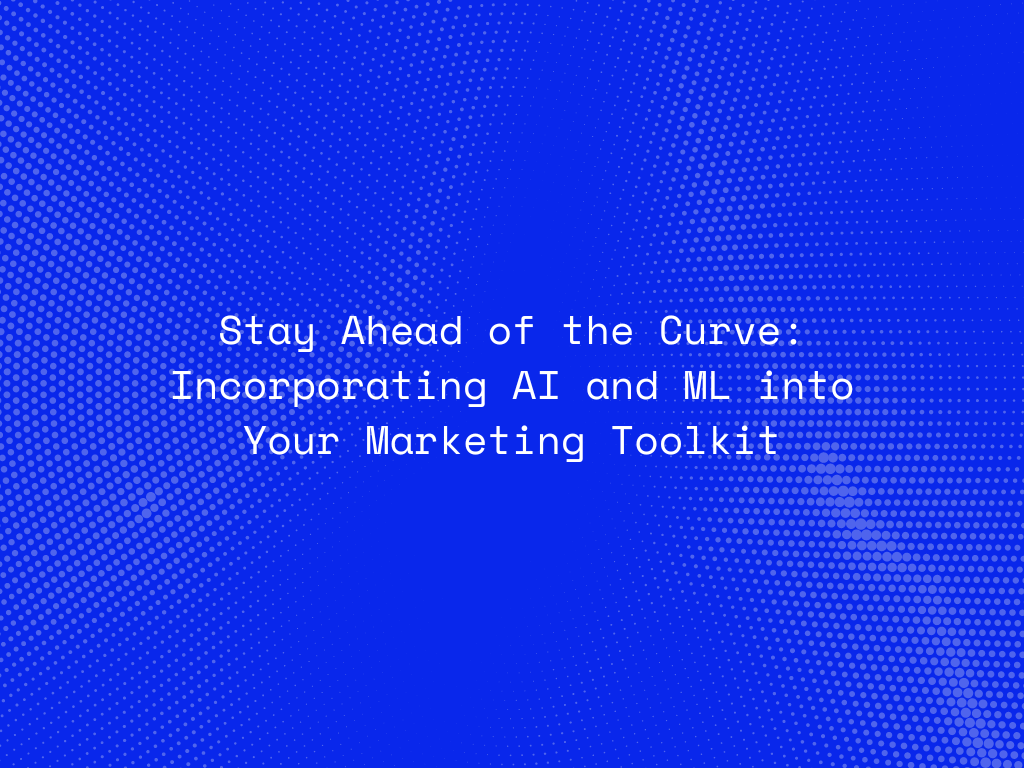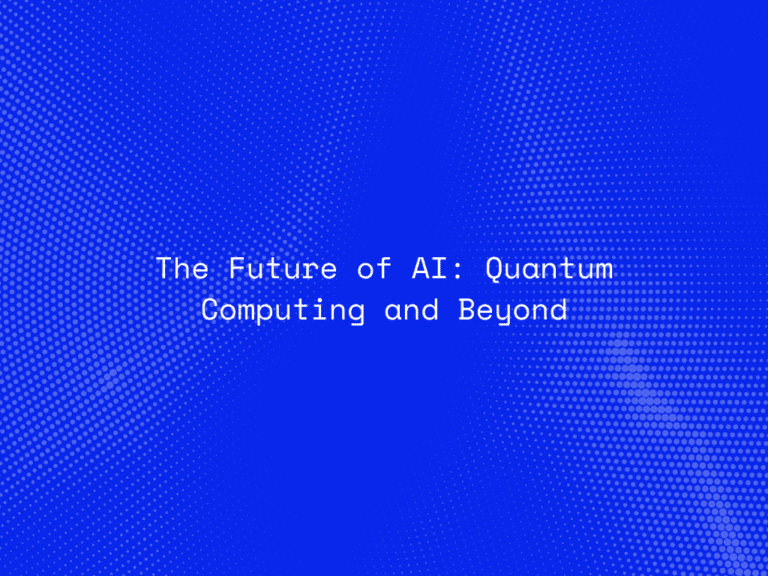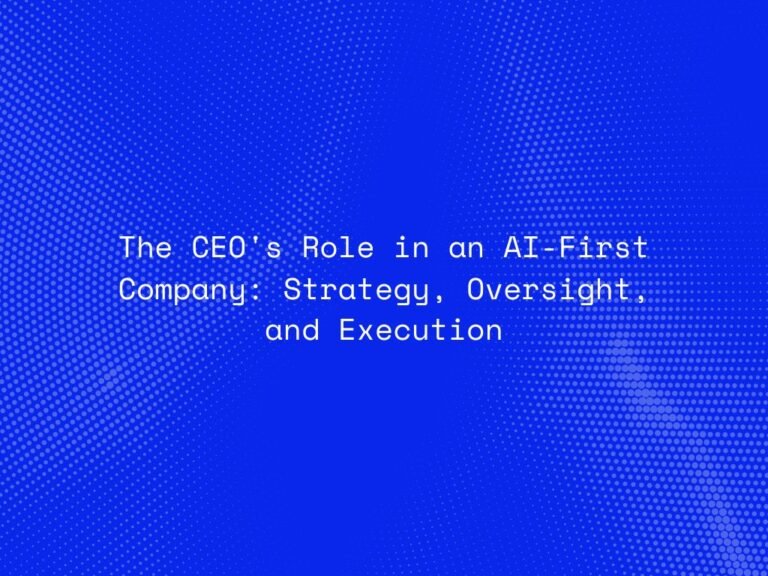The landscape of marketing is constantly evolving, and businesses must stay ahead of the curve to remain competitive. One of the most significant shifts in recent years has been the integration of Artificial Intelligence (AI) and Machine Learning (ML) into marketing strategies. These technologies offer unparalleled opportunities to enhance customer experiences, optimize campaigns, and drive business growth. In this blog, we will explore how AI and ML can be incorporated into your marketing toolkit, providing you with the insights and tools needed to elevate your marketing efforts to new heights.
The Role of AI and ML in Modern Marketing
AI and ML are transforming marketing by enabling data-driven decision-making, automating processes, and providing personalized experiences at scale. Here’s how these technologies are shaping the future of marketing:
- Data-Driven Insights: AI and ML can analyze vast amounts of data to uncover patterns, trends, and insights that would be impossible for humans to detect. These insights inform marketing strategies, allowing businesses to make more informed decisions.
- Personalization: With AI and ML, marketers can deliver personalized content, recommendations, and offers to individual customers based on their behavior, preferences, and interactions.
- Automation: AI-powered tools can automate repetitive tasks such as email marketing, social media posting, and ad bidding, freeing up time for marketers to focus on strategy and creativity.
- Predictive Analytics: ML algorithms can predict future customer behavior, such as likelihood to purchase or churn, enabling proactive marketing efforts.
- Optimization: AI can continuously optimize marketing campaigns in real-time, adjusting targeting, creative, and spending to maximize ROI.
Connect With Us
Key Areas to Incorporate AI and ML in Your Marketing Toolkit
-
Customer Segmentation and Targeting
- Behavioral Segmentation: AI can analyze customer data to create segments based on behavior, such as purchase history, browsing patterns, and engagement levels. This allows for more accurate targeting and personalized messaging.
- Lookalike Audiences: ML algorithms can identify new potential customers who resemble your best-performing segments, helping to expand your reach effectively.
-
Personalized Content and Recommendations
- Dynamic Content: AI-driven platforms can deliver dynamic content that changes based on the user’s preferences, location, and behavior. This personalization increases engagement and conversion rates.
- Product Recommendations: E-commerce platforms can use AI to suggest products to customers based on their browsing history, previous purchases, and similar customers’ behavior, driving cross-sell and upsell opportunities.
-
Automated Marketing Campaigns
- Email Marketing Automation: AI can automate and optimize email marketing campaigns by determining the best time to send emails, personalizing subject lines, and segmenting recipients for targeted content.
- Social Media Management: AI tools can schedule posts, curate content, and even engage with followers, ensuring your brand stays active and responsive on social media platforms.
-
Predictive Analytics for Campaign Optimization
- Predicting Customer Behavior: ML models can predict which customers are most likely to make a purchase, allowing marketers to focus their efforts on high-potential leads.
- Sales Forecasting: Predictive analytics can provide accurate sales forecasts, helping businesses plan inventory, set budgets, and allocate resources more effectively.
-
AI-Powered Advertising
- Programmatic Ad Buying: AI can automate the ad buying process, targeting the right audience at the right time with the right message, while continuously optimizing for better performance.
- Ad Creative Optimization: AI tools can analyze the performance of different ad creatives and suggest or automatically implement changes to improve engagement and conversion rates.
-
Chatbots and Conversational AI
- Customer Support: AI-powered chatbots can handle customer inquiries 24/7, providing instant responses and freeing up human agents to focus on more complex issues.
- Lead Generation: Chatbots can engage website visitors, qualify leads, and direct them to the appropriate sales or support channels, increasing the efficiency of your sales funnel.
-
Sentiment Analysis and Social Listening
- Brand Monitoring: AI can analyze social media mentions, reviews, and other online content to gauge public sentiment about your brand, products, or services.
- Crisis Management: By monitoring sentiment in real-time, AI can alert you to potential PR crises early, allowing you to respond quickly and mitigate damage.
-
A/B Testing and Experimentation
- Automated A/B Testing: AI can run A/B tests more efficiently by automatically adjusting variables, such as headlines, images, or CTAs, and determining the best-performing combinations.
- Multivariate Testing: AI can conduct complex multivariate tests, analyzing multiple variables simultaneously to find the most effective marketing strategies.
Connect With Us
Benefits of Incorporating AI and ML into Marketing
- Enhanced Customer Experience
- By delivering personalized content and offers, AI and ML help create a more relevant and engaging customer experience, leading to increased satisfaction and loyalty.
- Increased Efficiency
- AI-driven automation reduces the time spent on repetitive tasks, allowing marketing teams to focus on strategic initiatives and creative development.
- Improved ROI
- AI’s ability to optimize campaigns in real-time ensures that marketing budgets are spent more effectively, resulting in higher returns on investment.
- Data-Driven Decision Making
- With AI and ML, marketers can make decisions based on data and insights rather than intuition, leading to more accurate and impactful strategies.
- Scalability
- AI enables businesses to scale their marketing efforts without a proportional increase in resources, making it possible to reach larger audiences more effectively.
Challenges and Considerations
- Data Privacy and Security
- The use of AI in marketing requires access to vast amounts of customer data, raising concerns about privacy and security. Businesses must ensure they comply with data protection regulations and implement robust security measures.
- Complexity and Expertise
- Implementing AI and ML requires specialized knowledge and expertise. Businesses may need to invest in training or hire data scientists and AI specialists to fully leverage these technologies.
- Integration with Existing Systems
- Integrating AI tools with existing marketing platforms and CRM systems can be challenging. It’s important to choose AI solutions that are compatible with your current infrastructure.
- Ethical Considerations
- The use of AI in marketing raises ethical questions, such as the potential for bias in algorithms and the manipulation of consumer behavior. Businesses must use AI responsibly and transparently.
Connect With Us
Best Practices for Incorporating AI and ML
- Start Small and Scale Gradually
- Begin by implementing AI in a specific area of your marketing strategy, such as email automation or customer segmentation. As you gain experience and see results, gradually expand AI integration across other areas.
- Invest in Data Quality
- AI is only as good as the data it’s trained on. Ensure that your data is accurate, up-to-date, and free from bias to achieve the best results.
- Collaborate Across Teams
- Work closely with data scientists, IT professionals, and marketing teams to ensure that AI tools are implemented effectively and aligned with your business goals.
- Focus on the Customer
- Use AI to enhance the customer experience by delivering personalized, relevant, and timely content. Keep the customer’s needs and preferences at the center of your AI strategy.
- Monitor and Adjust
- Continuously monitor the performance of AI-driven campaigns and adjust strategies based on the insights gained. AI tools should be regularly updated to reflect changes in customer behavior and market conditions.
Conclusion
Incorporating AI and ML into your marketing toolkit is no longer a luxury—it’s a necessity for staying competitive in today’s fast-paced digital landscape. By leveraging these technologies, businesses can gain deeper insights into customer behavior, optimize campaigns, and deliver personalized experiences that drive growth. However, to fully realize the benefits of AI and ML, it’s essential to start with a clear strategy, invest in data quality, and focus on the customer. As AI and ML continue to evolve, the businesses that embrace these technologies will be well-positioned to stay ahead of the curve and achieve long-term success in the ever-changing world of marketing.




